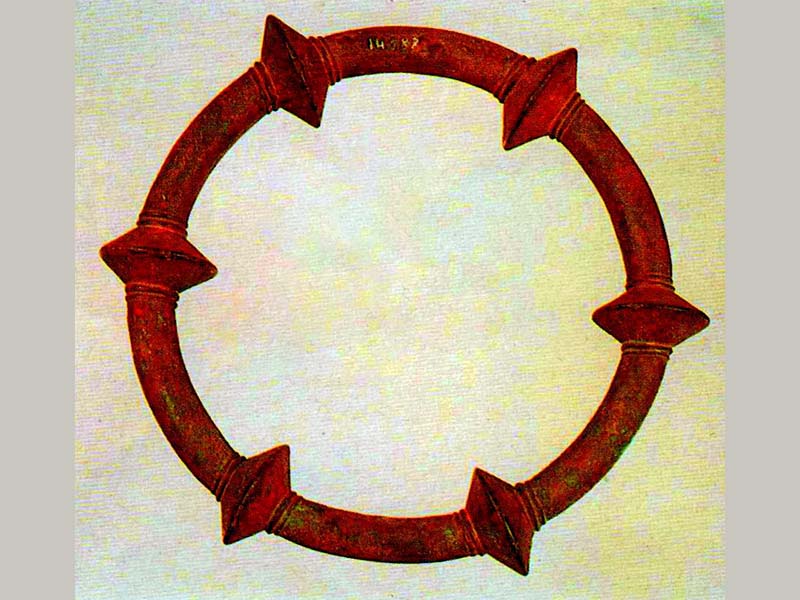di Francesca Principi
The knotted rings are one of the most characteristic symbols of the Piceno culture, even though they remain, to this day, finds whose true meaning remains mostly obscure.
To understand the cultural context in which these objects were created, it is of fundamental importance to make a premise on the identity of the Piceno people, where by Piceni we mean that set of peoples who inhabited part of the Marches and Abruzzo roughly between the XNUMXth and the third century. B.C
The knowledge of the Picene civilization is mainly based on the archaeological documentation, coming from (in primis) from necropolises but also from the remains of settlements and votive deposits. Even the classical sources give us significant indications and, according to what is reported by Pliny, Strabo and Festo, they originated from groups of immigrant Sabines: "Orti sunt a Sabinis vow truly sacred","they were originated by the Sabines, following the vow of a sacred spring”, says Pliny in his Italian description. The sacred spring was a ritual that consisted in dedicating every living being born in a given year to a divinity: when they turned twenty-one, young people were forced to leave their community of origin to look for new locations. Migration usually took place under the auspices of a totemic animal and, in this sense, the ethnonym of the Piceni may retain the memory of the woodpecker (picus), a bird sacred to Mars which, according to tradition, would have shown the way by landing on their banner during the journey.
The Piceni had close relations with the trans-Adriatic civilizations, with the populations of the lower Tiber valley as well as with the Villanovan centers first, and then with the Etruscans: frequent contacts are also attested with oriental merchants who arrived in the Tyrrhenian Sea from the Anatolian and Syriac regions (XNUMXth century BC ), as well as with the Greeks settled in southern Italy. Relations with the transalpine regions, on the other hand, only became evident when the Senoni Gauls settled there during the XNUMXth century. BC, in this territory. The numerous contacts with neighboring and non-neighboring civilizations had a profound effect on the local cultural substrate, giving rise to a characterized and original civilization, which reveals a strong sense of belonging to a common culture. However, the particular geographical configuration of narrow parallel valleys of the Piceno territory means that their civilization is variously articulated, with even considerable local differences; moreover, the probable lack of a hegemonic center capable of developing one faces shared throughout the territory, presumably ensured that a social organization for tribal groups, which expressed itself in this cultural fragmentation, continued to the end.
The large knots are one of the most emblematic examples of how this great cultural complexity gave rise to local material manifestations, even very diversified ones. The peculiar aspect of these finds is that they were found exclusively in female burials, in particular in the strip of territory between the Tronto and Tenna rivers: their limited distribution area seems to correspond to one of the political units into which the territory was divided piceno and that is that of the cuprenses, which certainly had a central role within an area in which the city of Cupra was probably the administrative center of reference for a vast area[1].
From a formal point of view, the rings look like rod rings, with a circular section, in cast bronze. From a typological point of view they are divided into two groups, with variations in the number and shape of the knots: in the first group the knots are rhomboidal in shape, held by raised rings, in the second they are in the shape of a round pearl, always between raised rings. In both cases there are specimens with four or six knots and they all have different dimensions; their weight, generally quite substantial, varies from 600 gr. approximately, until reaching 1880 gr.
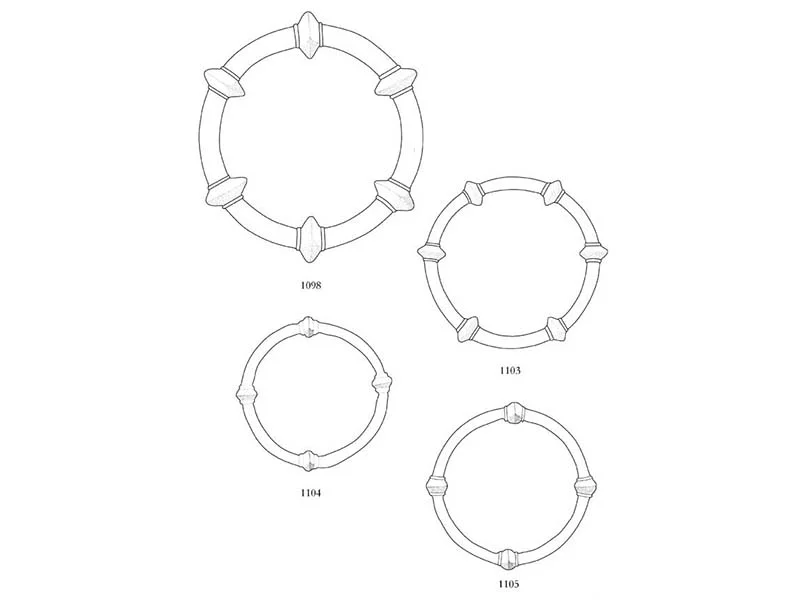
The singular element of these objects is that, in most cases, they were found resting on the pelvis of the deceased: in rare cases the large ring was on the head of the skeleton while, in other cases, they were in the hand of the deceased. They do not appear to be tied to any particular age group, as they are found in burials of both young and adult women. Furthermore, the fact that they are not present in all female burials and that they are not always related to the richest and most consistent funerary objects suggests that their presence is connected to a particular prestigious function performed by the deceased within the community: the link of these objects with the female womb is an element to which a strong symbolic value must have been associated, very probably linked to the generating capacity of the woman and, consequently, to the importance that this "role" had within the society.
The fact that some large rings were also found on the hands of the deceased could add an extra element regarding their intended use: it cannot be excluded that they were tools that were held and used for the celebration of rituals, thus assuming a further magical-religious value, perhaps connected to a priestly caste. In the hypotheses formulated by the scholar Maddalena Ugolini De Silva[2], it proposes a complex, albeit difficult to verify, interpretation of the big rings as symbols of the lunar cycle, however providing an interesting element regarding their possible use: it hypothesizes that, in the celebration of the rituals to which they were presumably dedicated, the big rings were grasped with both your hands and raise yourself towards the sky and notice that, in doing this, the ring goes to rest naturally between the palms of your hands. Perhaps it is precisely the position in which they had to be kept that caused the discovery of rings of different sizes, since it was necessary that each ring was of the size required by the size of the hands of the woman to which it belonged. Furthermore, according to the author, despite the heaviness of these objects, assuming this position in lifting them would make the effort almost zero, as if the efforts canceled each other and it was thus possible to maintain the position even for a long time.
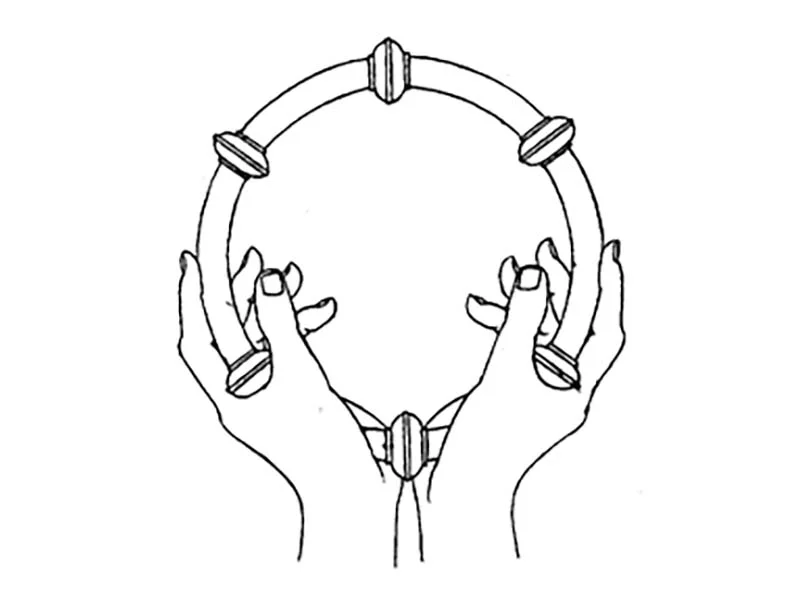
Given the evidence of the connection of the rings with the spiritual/religious sphere and with the feminine essence, a further step towards revealing their symbolic meaning can be done by delving into the origin of the people who inhabited, in particular, the area of the cuprenses, even before the actual Picene civilization took shape. The population of this area before the Iron Age is a rather complex question and, on the basis of the known sources, what emerges is the contribution of people from different origins.
From classical sources we know that, according to the tradition reported by Silio Italico, groups of Pelasgi, led by king Asi (aesis), landed in the Cuprense territory and there they assumed the name of Asili (a river called Aso still flows in the area today). The identity of the Pelasgians is a complex and never fully clarified issue, given that the classical sources give different descriptions of them: usually a generic oriental origin is attributed to them since it seems difficult to identify them with a specific people but, rather, the name could refer to a group of peoples who traded in the Mediterranean.
We also know that towards the thirteenth century. BC there were massive migrations of Hittite populations towards the western Mediterranean, following the collapse of their empire attributed, according to Egyptian sources, to the so-called "peoples of the sea". The peoples of the sea, whose only evidence comes from Egyptian written sources, are a set of populations, coming from southern Europe, which between the thirteenth and twelfth centuries. they invaded Anatolia (causing the collapse of the Hittite Empire), Syria, Palestine, Cyprus and the Egyptian New Kingdom. In this regard, the fortuitous discovery, in Cupra Marittima, of an amulet from an area affected by a Picene necropolis of the XNUMXth century BC is interesting. BC, which has bilingual inscriptions on both sides and appears to be dated to the end of the XNUMXnd millennium BC
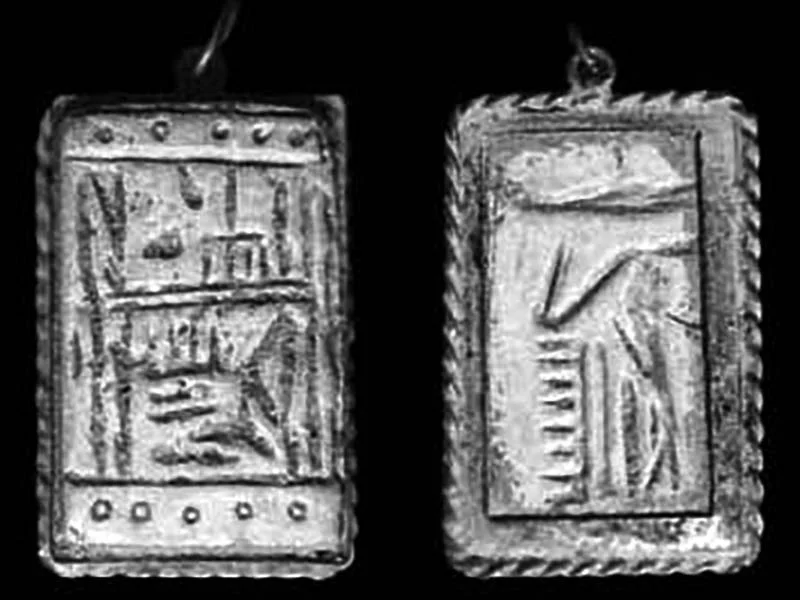
According to Giovanni Garbini "finding together in a single object Egyptian writing and signs referable to Mycenaean writing takes us back to a cultural horizon that can be determined historically: that of Palestine after the settlement of the so-called sea peoples”. He also adds that "the amulet of Cupra Marittima immediately reveals its Palestinian origin which for the period between the XII and X century. BC actually means Philistine, confirming the origin from a dominant Egyptian culture flanked by a culture of Aegean-Anatolian origin which was precisely the one that manifested itself in Palestine between the end of the II and the beginning of the I millennium”.According to Giuseppina Capriotti Vittozzi the amulet “it fits into a geographical area of dense oriental attendance also in the following centuries, as attested by the orientalizing Piceno, and calls into question the origin of the goddess Cupra that the ancient authors referred to Aphrodite Cypria, outlining on the Piceno coast a presence of the so-called of the sea and placing the foundation of the temple of Cupra within their action"[3].
Cupra is, currently, the only known female deity of the pantheon Piceno and, both material and written sources, associate it with the symbolic universe of mother goddesses: it is defined mater in several inscriptions and classical authors now associate it with Bona Goddess, mother goddess of Lazio origin, now goddess Ivy, mother of all gods, as well as define it Venus antistita, "priestess of Venus".
The theory of the origin of the goddess Cupra from Aphrodite Cypria, which was worshiped on the island of Cyprus, has its roots in very ancient times. Over the millennia, Cyprus was the destination of numerous migrations by different peoples, including Syrians, Phoenicians and Cretans, becoming an important point of exchange, as well as commercial, also cultural. It is very probable that both the Phoenicians and the Cretans had brought to the island, together with their own civilization, also their greatest cult, namely that of the mother goddess, Astarte for the Phoenicians, Potnia for the Cretans. The cult practiced by the Phoenicians we know comes directly from Ascalona, in Israel, where there was a sanctuary dedicated to the ancient Aphrodite of oriental origin: according to Herodotus the temple was: "(...) the oldest of all the sanctuaries of this goddess, because the sanctuary of Cyprus is derived from this, as the Cypriots themselves affirm, and the sanctuary of Kythera also erected by some Phoenicians”. Here it is possible to recognize the pre-Olympic dimension of the ancient goddess Aphrodite: she is presented as the equivalent of Astarte, the great Syro-Palestinian mother, the equivalent of the Babylonian Ishtar and of the Egyptian Isis. It is evident how the origins of these divinities, despite having different theonyms, can be referred to that single divine feminine principle which in its multiple aspects was venerated, since prehistoric times, both in the Near East and in Europe. The Phoenicians dedicated the famous sanctuary of Paphos in Cyprus to the cult of ancient Aphrodite, as is also remembered in the Homeric hymn: "Aphrodite who loves a smile (..) moved to Cyprus, to Paphos, where she has a sanctuary and a fragrant altar”. We know that this goddess, on the island of Cyprus, assumed the name of Face powder (Cyprine) and there is reason to believe that this goddess Aphrodite Cypria she originally possessed all the prerogatives of oriental mother goddesses, before assuming the limited and partial aspect of goddess of love and beauty. Therefore, the hypothesis that the cult of this goddess may have been imported to the Marche coast by Cypriot exiles, who probably arrived there to establish a new colony or a foothold for trade and navigation, is likely. Once settled on the Adriatic coast, they built a temple in honor of the greatest divinity they worshiped in their homeland, Aphrodite, whose appellation Face powder here it became Cupra[4].
In any case, whatever the origin of the goddess Cupra, we know that she was of great importance to the Piceni as well as the sanctuary dedicated to her, erected along the Adriatic coast: Silio Italico, in his "Punic", states: "(. .) et quis litoreae steamant altaria Cuprae (..)”, leaving us one of the most suggestive images linked to this goddess and to the smoking altars dedicated to her. Although the location of this temple still remains doubtful, we know from Strabo that it stood in the vicinity of the current Cupra Marittima and very probably there also stood an important emporium which became a place of meeting and exchange, both economically and cultural, for the peoples who came from the sea and from the hinterland.
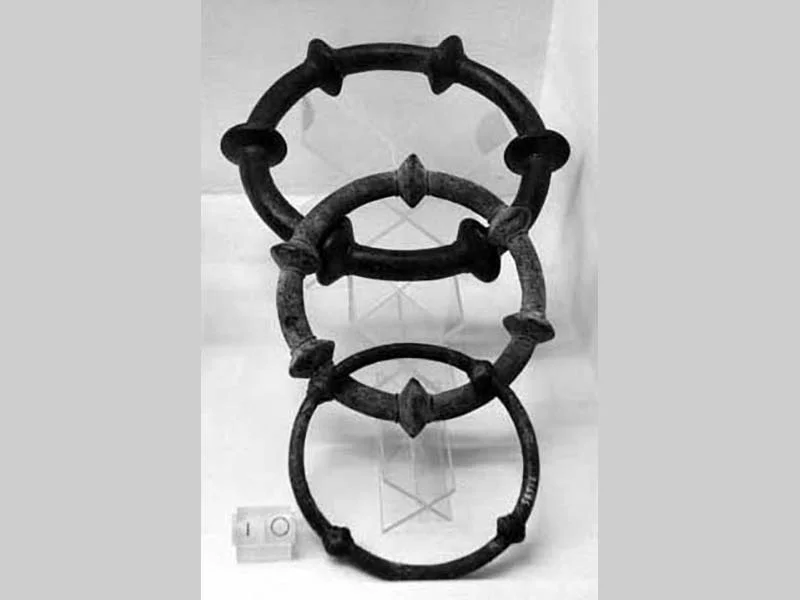
Therefore, the exclusive bond of the rings with the territory where the sanctuary of Cupra once stood makes a connection between these finds and the cult of the mater Cupra, to which we can imagine a corpus of female rituals connected to fertility and the regeneration of life, of which a last, sacred, testimony was given in the journey of these women after death.
[1] Tiziana Capriotti – “The cults ofager cuprensis in Roman times” – in The antiquities of Cossignano nel Piceno – edited by Mariano Malavolta – 2004.
[2] Maddalena Ugolini De Silva - "The Piceno ring: the goddess Cupra and the female initiation into the lunar mysteries" - in Study papers of the Italian civilization – Still 1983.
[3] Giuseppina Capriotti Vittozzi and Giovanni Garbini - "An Egyptian-philistine amulet from Cupra Marittima" -in Statements, Proceedings of the Accademia Nazionale dei Lincei – series IX-XI – file 4 – 2000.
[4] Bernardo Faustino Mostardi – Cupra – Ascoli Piceno – Archeoclub of Cupra Marittima – 1977.
Francesca Principi, July 2023
REFERENCES
- Elisa Biancifiori – “The big rings with knots” – in AA.VV. – The bronzes of the Gorga Collection – Rome 2012;
- Maddalena Ugolini De Silva - "The Piceno ring: the goddess Cupra and the female initiation into the lunar mysteries" - in Quaderni di studi della civilization italica - Fermo 1983;
- Giuseppina Capriotti Vittozzi and Giovanni Garbini - "An Egyptian-philistine amulet from Cupra Marittima" - in Rendiconti, Proceedings of the Accademia Nazionale dei Lincei - series IX-XI - file 4 - 2000;
- Vermiglio Ricci and Germano Vitali – “From the Mother Goddess the cult of the Goddess Cupra” – in Sanctuary magazine - 2016.

